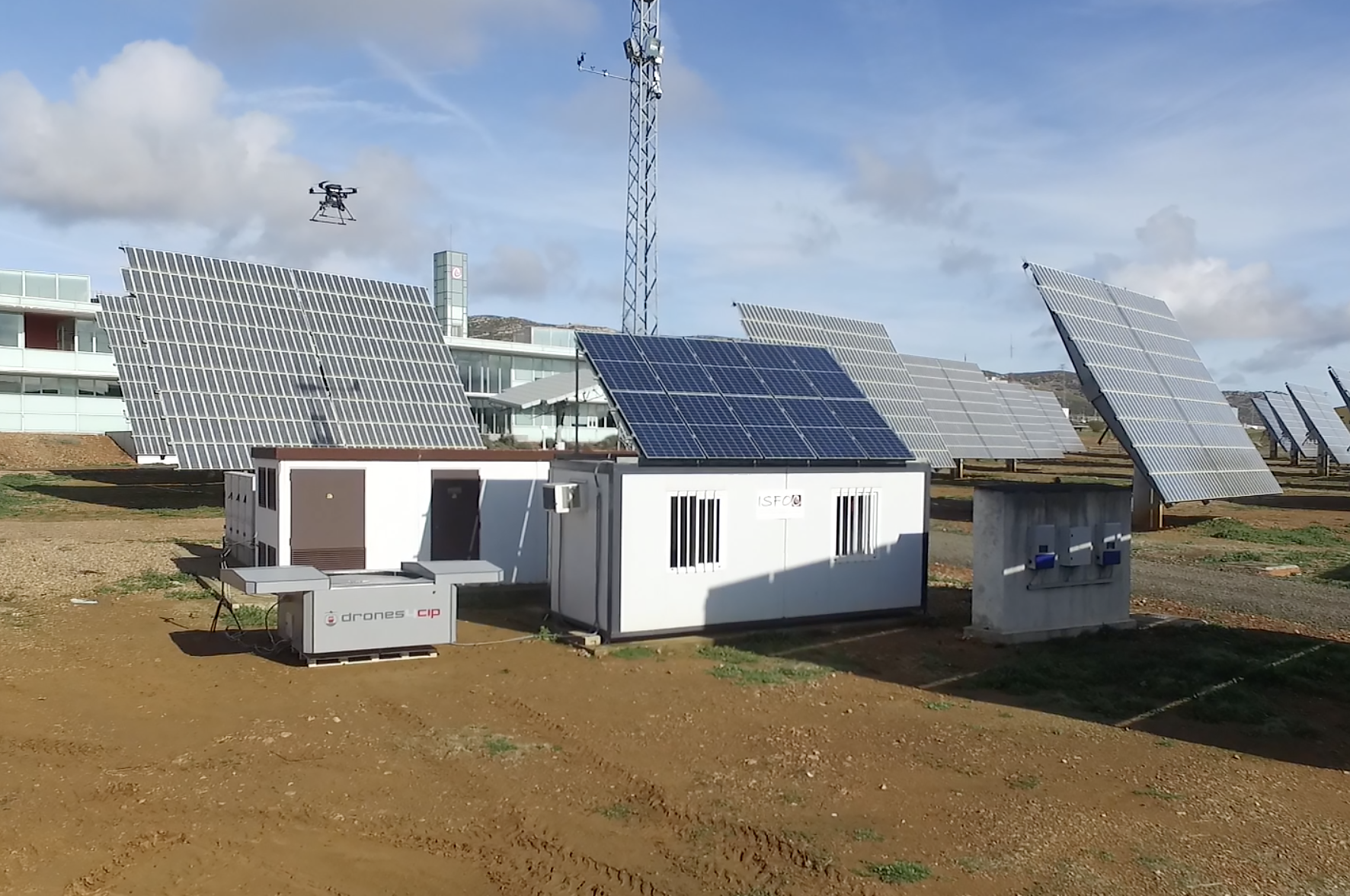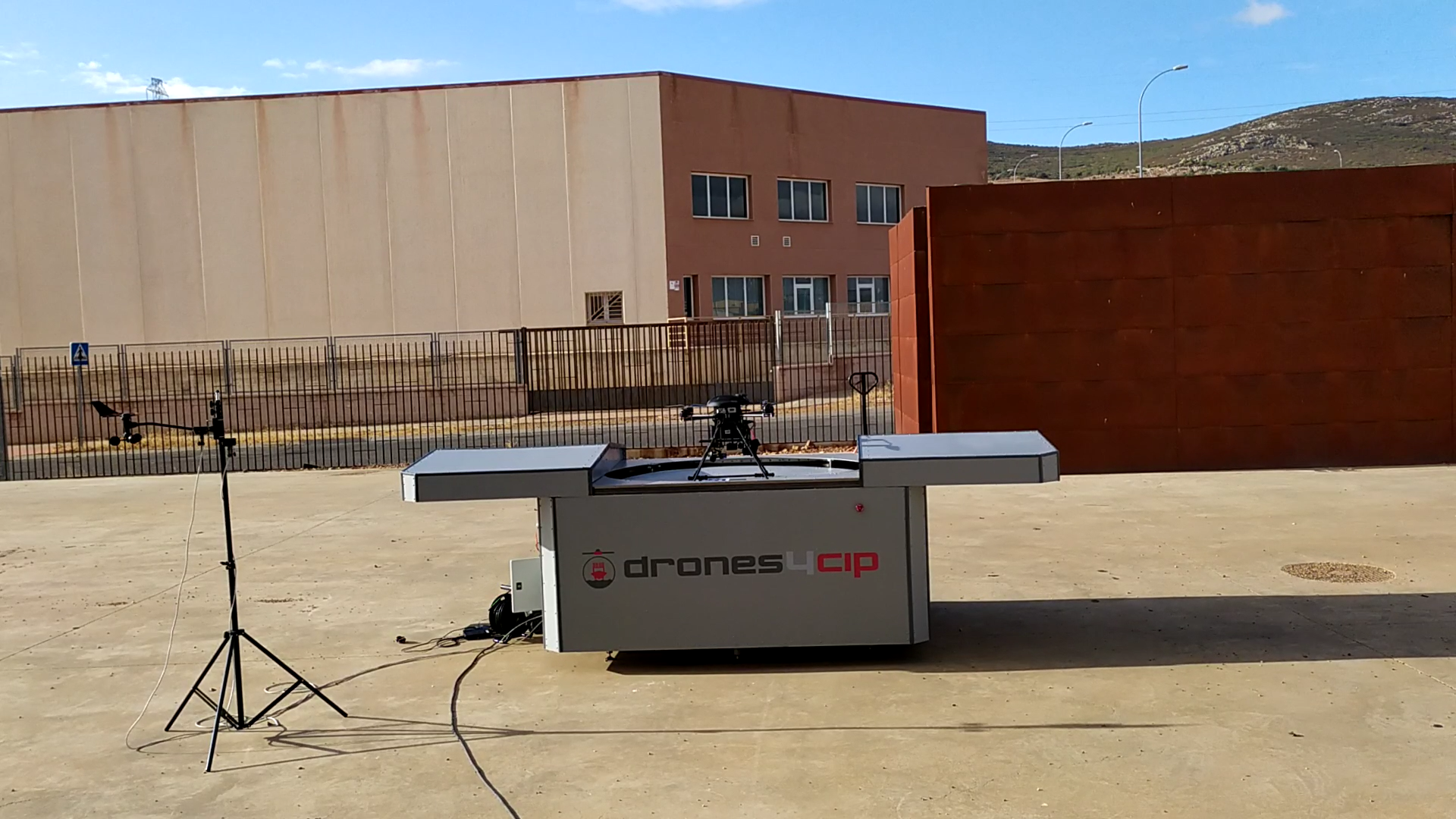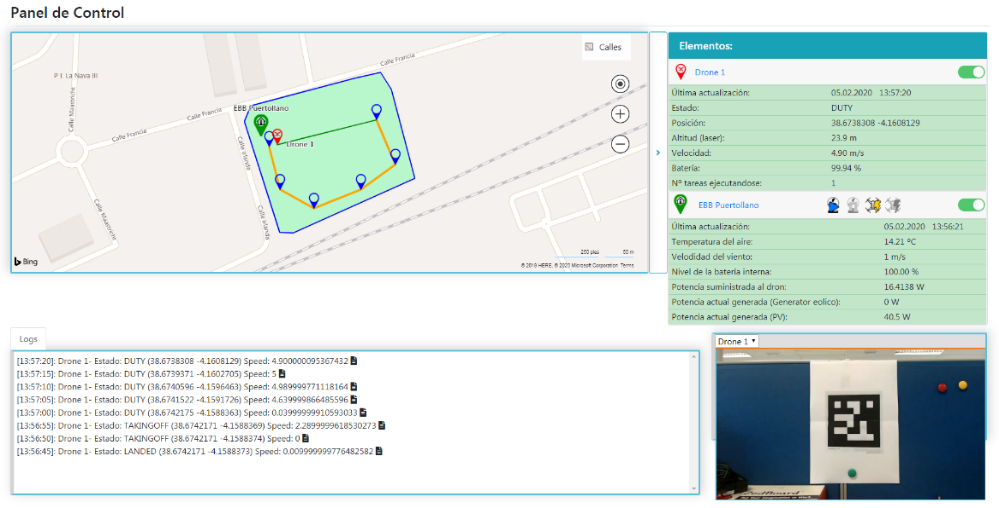
The DRONES4CIP project, involving the companies AEORUM, AYESA, and ISFOC (a company under the Ministry of Sustainable Development of the Regional Government of Castilla-La Mancha and part of the Castilla-La Mancha Finance Institute), concluded with a demonstration conducted for CDTI (Centre for the Development of Industrial Technology) evaluators at ISFOC’s facilities in Puertollano on February 6, 2020. The project is funded by the European Union under the programme for the Promotion of Regional Cooperation in R&D 2014-2020. FEDER INTERCONECTA with the file: 00091691 / ITC-20161257.
The project involves developing an integral unmanned drone fleet system based on stations for the landing, takeoff, and housing of multicopter drones. These platforms are energy-independent and include a set of logics and capabilities for the efficient management of the drone fleet, both for takeoff, landing, and recharging operations, and for surveillance flight operations.
These new technologies will address the challenge of protecting infrastructures that are currently unmanageable with available technologies, mainly due to physical limitations in flight autonomy and automation of surveillance tasks.

The project consists of an infrastructure for electricity generation using photovoltaic and mini-wind technology, with a battery storage system. This energy system powers a drone landing and recharging platform, which uses a robotic arm to connect the landed drone to the recharging system, performing a quick battery recharge.
A collaborative artificial intelligence system has been developed to coordinate inspection, surveillance, operation, landing, and takeoff tasks of the drones, which return to the recharging platform when the flight battery level is low. When one of the drones proceeds to perform landing maneuvers for recharging, the other drones in flight coordinate to take over the tasks of the recharging drone. The drone fleet is equipped with a navigation and autonomous flight system, performing flights and tasks without human intervention.

The project has also developed a centralized control and monitoring system for drone operations and their main operational parameters, integrating the status of the recharging platform and the status and location of the drones in operation.


The applications of the developed system are very diverse, depending on the sensors with which the drones are equipped:
-
Automatic and autonomous inspection of overhead power lines: By equipping drones with thermal cameras, recharging platforms can be distributed along power lines, and inspections of power lines can be carried out automatically without human intervention.
-
Infrastructure surveillance: By equipping drones with cameras and appropriate detection software for people and/or coordinating with anti-intrusion sensors, a fleet of drones can maintain surveillance over specific zones and/or areas.
-
Inspection of photovoltaic modules in large plants: A platform can be installed in the photovoltaic plant, and the drone will carry out thermographic inspection, dirt inspection, and even surveillance and intrusion detection fully automatically, without a pilot, reporting the processed images remotely.
The following companies have participated in the project: AEORUM, Fundación AYESA, and ISFOC.
 |
 |
Including collaboration with the University of Málaga
Project ITC-20161257 funded by the EU under the 2016 FEDER INNTERCONECTA call
FINANCIADO POR

.png)
.png)
.jpg)



